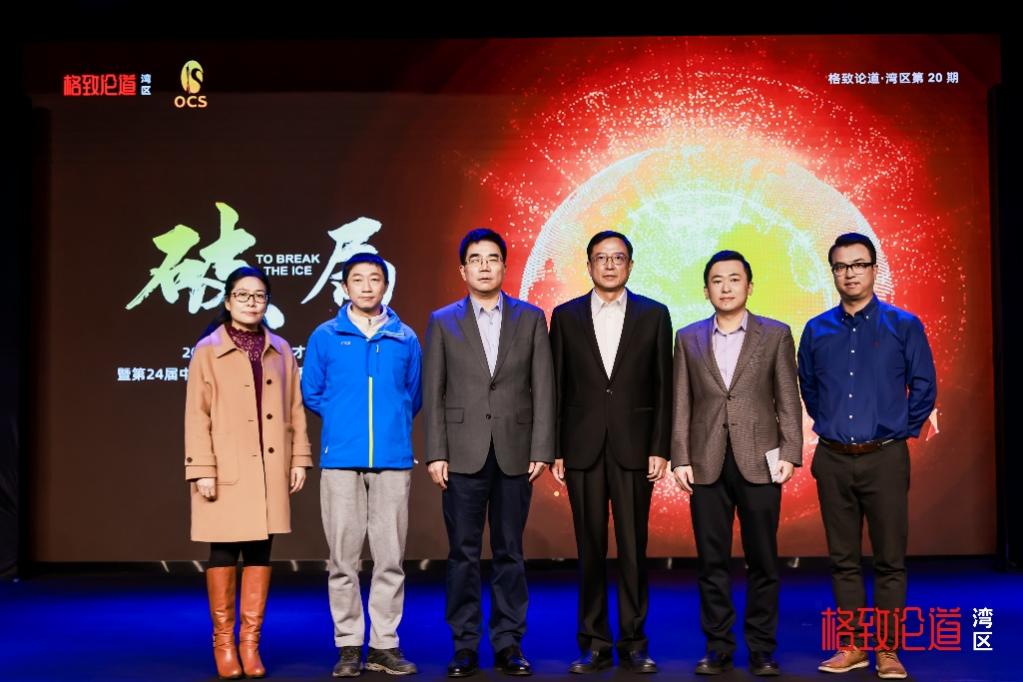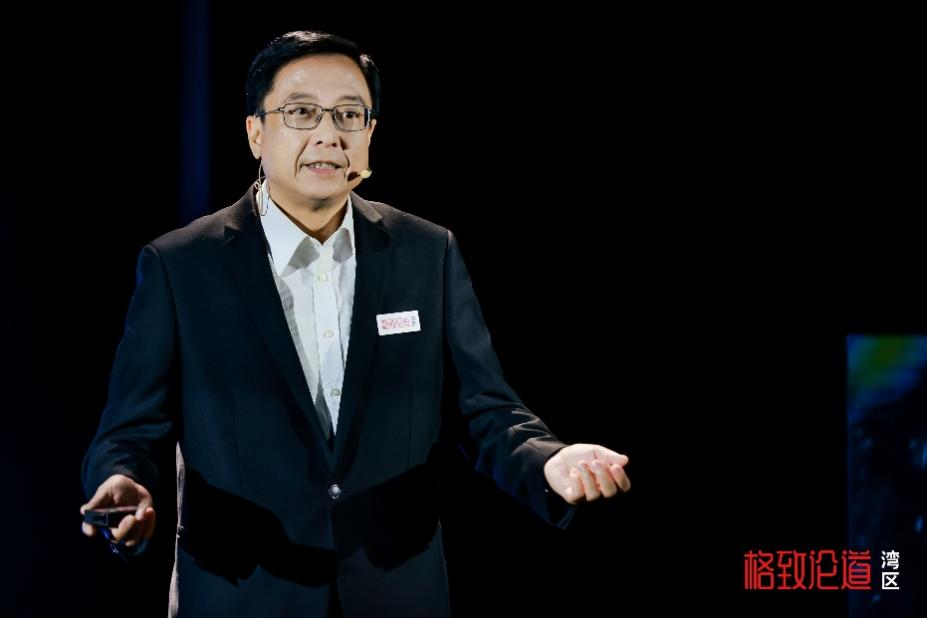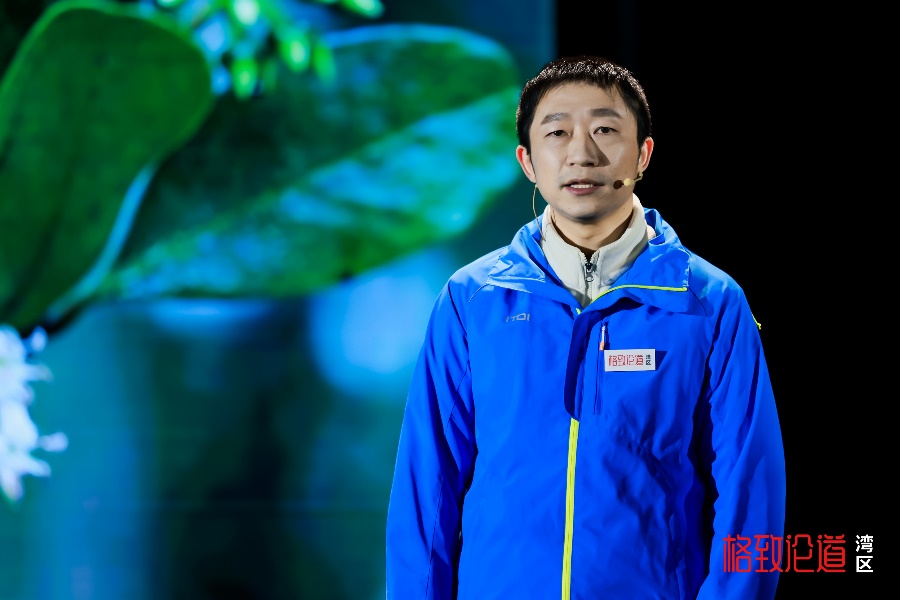|

In the afternoon of December 24, the 20th session of SELF forum - the 2022 China Overseas Talent Exchange Conference, i.e., the 24th Guangzhou Science and Technology Exchange Meeting for Chinese Overseas Students was held at the Guangdong Science Centre. With the theme of "Breaking the Mold", five guests from different fields were invited to share their stories of scientific research in the fields of scattered neutron source, origin of time, cold spring ecology, submarine volcanoes and mangrove conservation. The forum was broadcasted live online through the official website of the Ocean Fair, CCTV, China Science Expo, Beeping, Koushang Academic, Nanfang+, Gezhi Discourse and Guangdong Science Centre Weibo, Guangdong Science and Technology Newspaper, Institute of High Energy of Chinese Academy of Sciences and video account Wanxiang, etc.
The event was organised by the Guangzhou Science and Technology Bureau, hosted by the Guangzhou Institute of Internet of Things and Guangdong Science Centre, supported by Guangzhou Science and Technology Finance Group Limited and co-organised by the Guangdong-Hong Kong-Macao Greater Bay Area Science and Technology Museum Alliance.
From 0 to 1, achieving autonomous control and performance improvement of "Beijing Time

The rapid development of science and technology and the continuous progress of society have created an increasingly high demand for high-precision timing services. "Beijing Time" is generated by the National Timing Centre of the Chinese Academy of Sciences in Shaanxi. National standard time generation requires high precision atomic clocks, but for decades, atomic clocks were mainly imported. In 2005, Zhang Shougang returned to China after studying abroad. He started from scratch and led the research team for more than ten years, successfully developed the first international laser pumping small caesium clock, time-keeping rubidium fountain clock, benchmark caesium fountain clock and the world's smallest chip atomic clock, etc., and established a multi-method world time autonomous measurement system, etc., realizing the independent control and performance improvement of Beijing Time.
Zhang Shougang's footsteps never stop. in October 2022, Zhang Shougang was responsible for the development of the "space station high-precision time-frequency scientific experiment system", along with the "dream sky" experiment module successfully lifted off, which will be the highest international precision space time and frequency signal generation and transmission system. The system, which includes the world's first space light clock, will support basic physics research and important engineering applications, including the enhancement of the BeiDou system. At present, he is also responsible for the development and construction of the high-precision ground-based timing system, which is a major national science and technology infrastructure. He has proposed a three-dimensional crossover national timing system, and within five years, a resilient national timing system will be built with the mutual integration and enhancement of space and sky, turning the "Chinese big clock" proposed by Mr Qian Xuesen into the "Chinese 3D big clock", which will strongly support the country's high quality development.
China's first pulsed fission neutron source built from scratch

Since 2007, in the soil of Songshan Lake, Dongguan, Chen Yanwei, Deputy Director of the Institute of High Energy Physics of the Chinese Academy of Sciences, has participated in and witnessed the whole process of the "national weapon", the China Scattered Fission Neutron Source, from the blueprint to its completion, to the "Chinese acceleration" of scientific research, which has filled the gap in the field of pulsed neutron applications in China.
Like a "super microscope", the Scattered Neutron Source can detect microscopic scenes inside matter, from small mobile phone chips and DNA to deep-sea submersibles and high-speed railway wheels, thus providing technical means for China's research in the fields of materials science, physics, chemical engineering, environment and energy. Supported by the Scattered Fission Neutron Source, China's first self-developed experimental device for accelerator boron neutron capture therapy (BNCT), one of the most advanced treatments for cancer, has been successfully developed. BNCT can kill cancer cells with precision and does not affect normal cells.
Due to the large investment, technical complexity and difficulty of the experiments, the key technologies of the Dispersed Neutron Source were mastered by foreign countries in the past and there was no possibility to introduce them. Therefore the construction was preceded by a large amount of pre-fabrication research. Through innovative research, the team of the Scattered Neutron Source has achieved a localisation rate of over 90% of the equipment, and the overall performance of the whole device has entered the ranks of the international advanced, and many of the equipment has also gone out of the country. The completion of the project is not the end, but another starting point. In order to continuously optimise and improve the beam current and targeting power, the second phase of the China Scattered Fission Neutron Source project is expected to officially start within this year, which will be one of the key tasks of the Scattered Fission Neutron Source team in the future.
In-situ exploration of deep-sea cold springs to serve deep-sea resource development

Not only is there colourful life on the seabed, but there is also green and efficient clean energy from combustible ice. A car, for example, can run 300 kilometres if it is filled with 100 litres of natural gas; but if the same volume of combustible ice is added, it can run 50,000 kilometres. With the advantages of wide distribution, large scale, shallow burial, high density, high combustion value and clean and pollution-free, combustible ice is considered to be the most ideal alternative energy source in the 21st century. And China's combustible ice reserves rank first in the world, with very broad development prospects.
The dynamics of combustible ice is closely related to cold springs on the seafloor, and the study of cold springs is of great significance to the search for combustible ice. According to Wang Shuhong, a researcher at the South China Sea Institute of Oceanography, Chinese Academy of Sciences, at present, China has discovered cold spring systems in eight seas, among which, cold springs in the South China Sea are mainly distributed at water depths of 200-3000 m. She and her team have been focusing on the study of the formation and evolution of seafloor cold spring systems in recent years, and have independently developed a number of in-situ observation equipment for seafloor cold springs to achieve observation and sampling studies of seafloor cold spring activities. In the future, with the support of the State, the South China Sea Institute of Oceanography of the Chinese Academy of Sciences, where the team is based, will also build a large scientific device for cold spring ecosystem research and develop a more advanced deep-sea manned subsea experimental platform to explore more mysteries of the cold spring system.
Exploring submarine volcanoes and strengthening monitoring and prevention

Volcanic eruptions are one of the natural catastrophes, and volcanoes can erupt not only on land but also in the oceans, known as 'submarine volcanoes'. In 2022 alone, there will be six larger eruptions of submarine volcanoes around the world. One of the most talked about eruptions, Tonga, was the largest in more than 100 years and had the energy of 1,000 Hiroshima bombs, causing serious atmospheric pollution, building damage, human casualties and economic loss. Better understanding and monitoring of submarine volcanoes will therefore help to better prepare for and minimise disasters caused by volcanic eruptions.
Zhang Jinchang, a researcher at the South China Sea Institute of Oceanography, Chinese Academy of Sciences, said that many submarine volcanoes are hidden at depths of thousands of metres and are far from the surrounding land. To observe the volcanoes, it is necessary to take a modern scientific research vessel with advanced oceanographic instruments, combined with satellite and land-based communication equipment to measure the height of the volcanoes and take CTs. After several sea-based surveys, Zhang Jinchang, in collaboration with an international research team, discovered that the "largest single volcano on Earth" is the Great Tamu Volcano in the Pacific Ocean, the size of which is comparable to that of the largest volcano in the solar system, Olympus on Mars. It is the size of Guangdong and Guangxi combined. It is an extinct volcano that formed more than 100 million years ago and is not in danger of erupting today, but it is an important reference for us to study the mechanisms of volcanic formation under the sea. There are also sporadic submarine volcanoes in the waters around our country, which are relatively safe but still need to be monitored. At present, China is building the National Undersea Scientific Observation Network, a major national science and technology infrastructure project, which will serve the comprehensive needs of marine disaster warning, environmental monitoring and resource development in the future.
Conserving mangroves to help make our country carbon neutral

Mangroves are a group of woody plants that grow in the intertidal zone of tropical and subtropical coasts. The bark of these plants contains a substance called tannin, which oxidises to red when it comes into contact with air, hence the name 'mangrove'. In China, mangroves are mainly distributed in Guangdong, Guangxi, Hainan and other provinces along the coast of the sea, it is not only a "coastal guardian" to prevent wind and waves, purify seawater, maintain biodiversity, but also a "marine green lung" to sequester and store carbon and cope with climate change. The carbon sequestration capacity of mangroves is six times that of tropical rainforests.
However, with the expansion of human activities and increased environmental pollution, mangroves are dying out on a large scale globally, while China is one of the few countries in the world with a net increase in mangrove area. Peng Yisheng, Associate Professor at the School of Environmental Science and Engineering of Sun Yat-sen University, and his team are one of the many mangrove conservation teams that have been investigating more than 150 typical mangrove distribution sites in Guangdong Province since 2011, and have found a new home for the mangrove by rescuing seedlings and relocating them to Huizhou, the northernmost point of its geographical distribution. In addition to this, they found that although the 'exotic' species grows rapidly, its carbon storage per unit area is much lower than that of native species, and that it severely squeezes the space for native species to survive, resulting in limited expansion of the dwarf native species. He and his team "feed" the exotic species so that while the leaves fall off and growth stops, the trunks remain upright and retain their function as wind and wave protection. For Peng Yisheng and his team, mangrove conservation is always a work in progress and they will spare no effort to contribute to the conservation and restoration of mangroves in China.

Professor Ku Yixuan from the Department of Psychology of Sun Yat-sen University was the special guest host of the event. With his calm and wise hosting style, he led the audience to the fascinating big science installation.
Since 2019, SELF forum - Bay Area has joined hands with OCS for four consecutive years and has been invited as a special guest speaker of the conference, attracting a large number of loyal audiences at home and abroad with its exquisite and innovative stage presentation, renowned and top expert speakers, lively and interesting scientific content and mature and professional network dissemination, which has become a major feature of the OCS.
(Correspondent: Lei Jinping Contributed by: Guangzhou Institute of Internet of Things)
|


 Home > News >
Home > News >